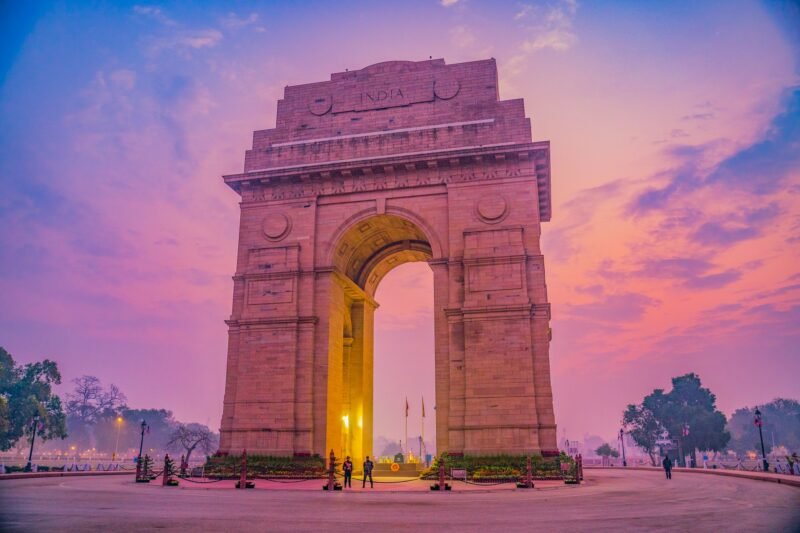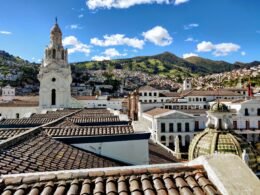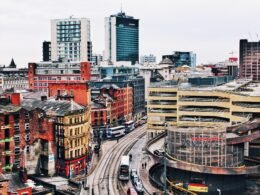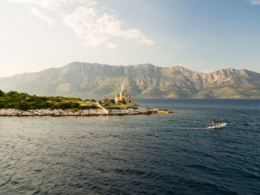From the landlocked North with its rich history to the coastal South framed by the Arabian sea and the Indian Ocean, India is truly a vast and dynamic country with much to offer.
If you have ten days to spend in this vibrant country and want to explore some of the most iconic sites, I suggest starting with the famed Golden Triangle route.
Table of Contents
- Day 1: Delhi (2 Nights)
- Day 2: Delhi
- Day 3: Delhi to Jaipur (Rajasthan) (3 nights)
- Day 4: Jaipur
- Day 5: Sanganer and Bagru Village, Jaipur
- Day 6: Jaipur to Agra (Uttar Pradesh)(2 nights)
- Day 7: Explore Agra and visit the Taj Mahal
- Day 8: Agra – Delhi – Varanasi (2 nights)
- Day 9: Varanasi
- Day 10: Varanasi – Delhi – Home
- Final thoughts:
The Golden Triangle is a popular route in the North characterized by exquisite ancient architecture. It truly offers travelers a taste of India’s dynamism and is a great introduction to Indian culture, history, customs, and of course, delectable cuisine. For these 10 days, you’ll use private car hire, the odd rickshaw, an internal flight, and lots of exploring by foot.
Day 1: Delhi (2 Nights)
Welcome to Delhi, India’s capital territory. This is where your adventure begins, and there is much to see. You’ll start your first day in Delhi by exploring the oldest part of the city, known as Old Delhi. There are many attractions here, so put on your walking shoes, hail a rikshaw or car, and get ready to indulge in lots of history (and many tasty snacks)

What to do and see in Delhi?
There is much to do in old Delhi, and since you only have two days here, it might be worth renting a car with a driver. Top sites include:
The Red Fort: The Red Fort is located in the heart of the city and was once home to the Mughal Emperors. Constructed in 1638, it boasts incredible Indo-Islamic architecture. Admire the stone walls and 14 entrance gates, visit the museum complex and the archaeological museum, and explore the opulent Diwan-i-Khas hall, where emperors welcomed essential dignitaries. If you visit in the evening, catch a 1-hour sound and light show.
Jama Masjid: Located near the Red Fort, Jama Masjid is the largest mosque in India and can house up to 25 000 people. Marvel at the white marble and red sandstone exterior as you take in this holy site. The west gate faces the holy land of Mecca.
Khari Baoli: Tour the largest wholesale spice market in all of Asia and take in the exhilarating aromas as you walk on foot. Here you can purchase delicious spices, herbs, nuts, and teas.
Where to eat in Delhi?
If you’re a foodie, then Old Delhi is your personal food heaven.
Stop at Chandni Chowk market (also known as moonlight square): Enjoy some of the best street food around. Paranthe Wali Gali street in the area is a must if you want to try delicious paratha flatbreads and sip on a lassi. You can also visit the narrow alley opposite Jama Masjid for mouth-watering desserts like Mughlai dessert.
Grab a drink or snack in the funky Hauz Khas urban village neighborhood or try some of these top restaurants:
•Bukhara
•Indian Accent
•Town Hall.
If you love sampling different dishes, why not consider a walking food tour?
Where to stay in Delhi?
- $$$ – The Claridges, New Delhi
- $$ – Bloomrooms @ New Delhi Railway Station
- $ – Hotel Krishna
Day 2: Delhi
Today is our second day of exploring Delhi, and once again, there is a lot to see.

What to do and see in Delhi?
Qutub Minar: The Qutub Minar victory tower and minaret was built in 1199 and has been declared a UNESCO world heritage site. The tower reaches dazzling heights of 72.5 meters but sadly cannot be climbed any longer. The Qutub complex has much for travelers to see, including various monuments and tombs. Hire an audio guide and learn about the Quwwat-ul-Islam Mosque, the Iron Pillar, and the ruins of centuries-old Jain Temples.
Connaught Place: This is a fabulous commercial and financial hub (officially called Rajiv Chowk) and is characterized by colonial-era architecture and a plethora of upmarket shops and eateries.
Humayun’s Tomb: built in the 16th century, this is the final resting place of the Mughal Emperor Humayun. Delight in the Mughal and Persian architecture and gorgeous red sandstone. This is the first garden tomb in India and inspired the prominent Taj Mahal in Agra.
Lotus temple: This fantastical Baháʼí House of Worship is famous for its flower-like shape. Marvel at the glass ceiling that allows the light to pour into the worship hall and the expansive visitors’ center to learn about its history.
Day 3: Delhi to Jaipur (Rajasthan) (3 nights)
Travel time: 5 hours and 27 minutes (281.4 kilometres) with a private driver.
Today you’re traveling from Delhi to the city of Jaipur – which is also known as the Pink City thanks to the abundance of terracotta buildings in the area. There’s a bit of driving to do today, so pop on some comfy clothes and bring some snacks along for the ride.

What to do and see in Jaipur?
Amer Fort: This magnificent fort is one of Rajasthan’s most famed fortifications. Explore the intricate marble exterior and revel in the opulent ambiance, lavish carvings, and exquisite furnishings.
Jal Mahal (the Water Palace): Next, you’ll visit the Jal Mahal palace, which was originally built as a duck hunting lodge. This palace can only be viewed from the riverbanks or via boat ride. If you love dizzying heights, you can also opt to ride a hot air balloon here.
Catch the sunset at the Surya Mandir (Sun Temple): Jaipur’s Sun Temple is a small Hindu temple that offers guests phenomenal panoramic views of the city. Catch the sunset and enjoy this stunning bird’s eye view of the Pink City.
Where to eat in Jaipur?
• Suvarna Mahal: For fine dining in a historical building with glorious, frescoed ceilings and tapestry-laden walls.
• Masala Chowk: A must-see open-air food market with an abundance of tasty food stalls.
Where to stay in Jaipur?
- $$$ – Hilton Jaipur or Devi Ratn
- $$ – Nahargarh Haveli
- $ – Heritage Hotel Vaishnavi
Day 4: Jaipur
You’ll spend a full day exploring Jaipur’s historic sites today. Make sure you’re wearing some comfortable walking shoes.

What to do and see in Jaipur?
City Palace: This gorgeous palace complex is one of the most iconic in Jaipur. Built-in 1727, this sprawling area consists of stunning courtyards, temples, and buildings. Explore Chandra Mahal, Maharani’s Palace, the City Palace Museum, and Shri Govind Temple while in the palace grounds.
Hawa Mahal: Marvel at the exquisite façade of the Palace of Winds. This is one of the city’s most famed buildings, made of 953 little windows configurated into a honeycomb shape.
Jantar Mantar: Browse this incredible collection of 19 astronomical instruments which were used by the Mughal’s. You can also see the world’s largest sundial.
Raj Mandir Cinema Hall: After dinner, why not check out a Bollywood film at this famous cinema which was built in 1976?
Day 5: Sanganer and Bagru Village, Jaipur
If you love textiles and design and want to explore an array of incredible crafts – from camel leather crafts to handmade paper – the villages of Sanganer and Bagru are worth a visit and can be accessed via private car.
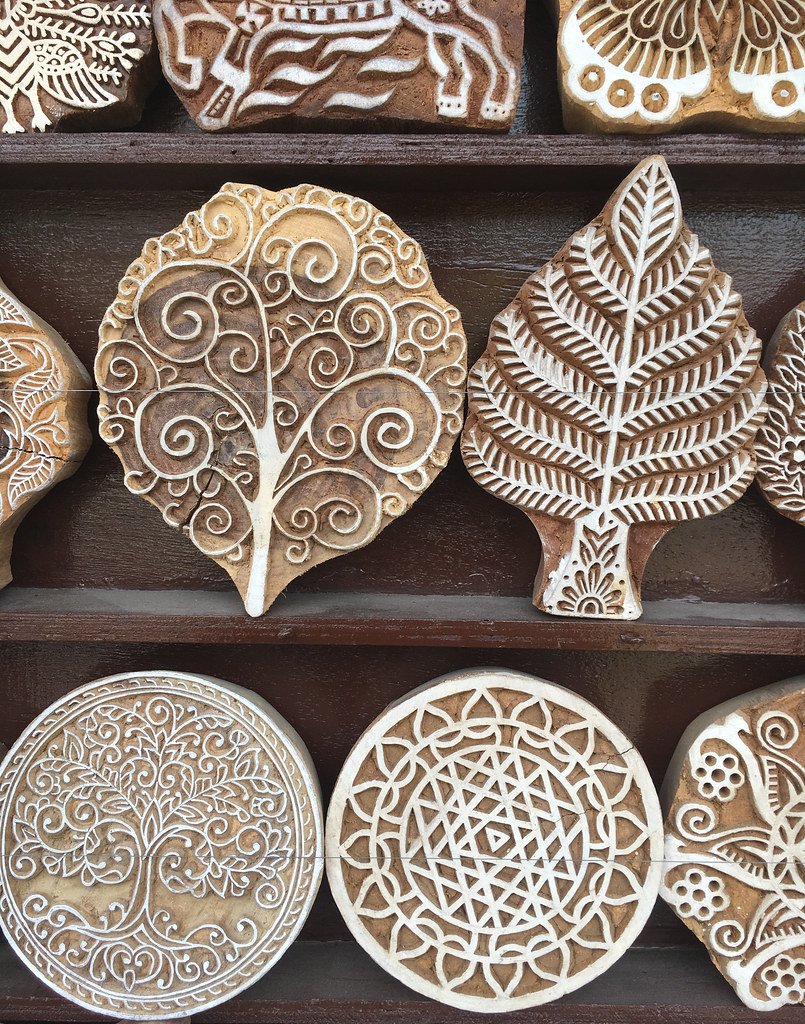
What to do and see in Sanganer and Bagru?
Sanganer: Sanganer is located 16 kilometers from Jaipur and is known for its gorgeous crafts and special handprinted textiles. Sanganer’s artisans, known as Kagazis, work at Kagazi Mohalla and can be witnessed creating magnificent, patterned masterpieces. While here, pay a visit to the Shri Digambar Jain Temple with its intricate carvings.
Bagru Village: Next, you will head to Bagru Village, located 30 km from Jaipur. Here you can explore more incredible block printing techniques and the famous Bagru prints, which still use traditional dyes. Red dyes are made from the roots of madder trees, and blue dyes are from indigo. If you’re passionate about textiles and design, it might be worth booking a day trip and learning about the craft from one of the local master printers.
Return to Jaipur in the late afternoon: You could also check out a magic show or puppet performance at Chokhi Dhani or visit Johari Bazaar with its precious gems, Mojari leather sandals, and stunning sarees. (If you aren’t totally shopped out!)
Where to eat in Bagru Village?
• Chokha Punjab
• Bagru Hotel and restaurant
Day 6: Jaipur to Agra (Uttar Pradesh)(2 nights)
Travel time: 4 hours and 35 minutes (237.7 kilometres) with a private driver.
Agra forms the third apex of the famous Golden Triangle after Delhi and Jaipur and is located on the Yamuna River in the State of Uttar Pradesh. The city is known for its incredible Mughal architecture and for housing one of the world’s seven wonders – the Taj Mahal.

What to do and see in Agra?
On your way to Agra, you can enjoy two interesting stops. Firstly, stop at the Harsha Marta Temple in Abhanheri: This 8th-century temple can be found en route to Agra. The ruins are worth a meander, and visitors can also explore Chan Baori, the deepest and largest constructed stairwell.
You can then stop at Fatehpur Sikri, a small town located west of Agra. This was the Mughals first planned city and it is home to several historical points of interest, including the Buland Darwaza imperial gate built in the 17th century, the Panch Mahal Palace, and the Tomb of Salam Christi.
You’ll then head on to Agra and spend the afternoon visiting some famed tombs or markets. Consider adding these sites to your list:
Tomb of Akbar the Great (a successful Mughal emperor who extended their dynasty to include non-muslims (including Hindus) into the empire.
Tomb of Mariam (Akbar the Great’s favorite wife.)
You can also visit some of the top markets and bazaars in Agra, including:
Sadar Bazaar: Located near the Agra Cantt railway station, this market has everything from handcrafted goods and garments to cafes and restaurants.
Subhash Bazaar: A great spot to find stunning sarees and silks.
Where to eat in Agra?
There are many delicious restaurants in Agra. Top contenders include:
- Esfahan – (one of the best spots for traditional food)
- Taj Bano
- Jahanpanah (For amazing Awadhi food cooked in traditional ‘dum’ style over a slow fire.)
- Joney’s Place (An affordable and tasty spot loved by locals)
- Dasaprakash (For South Indian veggie cuisine)
Where to stay in Agra?
- $$$ – ITC Mughal – Luxury Resort and Spa
- $$ – Double Tree by Hilton or Crystal Sarovar Premiere
- $ -Max Guesthouse or The Coral Tree
Day 7: Explore Agra and visit the Taj Mahal

What to do and see in Agra?
On your second day in Agra, you will visit many historical sites.
• Taj Mahal: Today, you will visit one of India’s most iconic sites, The Taj Mahal. If you’re an early bird, wake up at dawn and visit the Taj Mahal for sunrise. Check out this guide for the perfect Taj Mahal trip.
Related: Everything You Need to Know About Visiting the Taj Mahal
• Agra Fort: Located a couple of kilometres from the Taj Mahal, Agra’s Red Fort is another historical masterpiece. The Mughatl-era architecture includes juxtapositions of red sand and marble and symbolizes Mughal’s historical rule. The complex includes
• Mehtab Baag: This stunning garden across the river from the Taj Mahal boasts some of the best views of the Taj. It is definitely a photo-worthy location.
• I’timād-ud-Daulah: This Mughal mausoleum is often called the Baby Taj (as it’s said to be a replica) or the jewel box since as it’s made of small, decorative patterns embodying total intricacy and elegance.
Day 8: Agra – Delhi – Varanasi (2 nights)
Travel time: Agra – Delhi via a private driver: 4 hours and 5 minutes (231.3 kilometres) and then Delhi – Varanasi by plane: 1 hour and 30 minutes.
Wake up bright and early to head back to Delhi and catch a 1.5-hour flight to the spiritual city of Varanasi.
Varanasi is one of the most beautiful and spiritual cities in northern India. Located on the banks of the Ganges, it’s a popular place of pilgrimage for both Hindus and Jains. Bathing in the River Ganges is said to purify the soul and wash away sins and visitors can enjoy many a scene of devotion when visiting this town. Enjoy this stunning town with the backdrop of age-old temples, the holy Ganges River, and numerous historical buildings, markets, and forts.
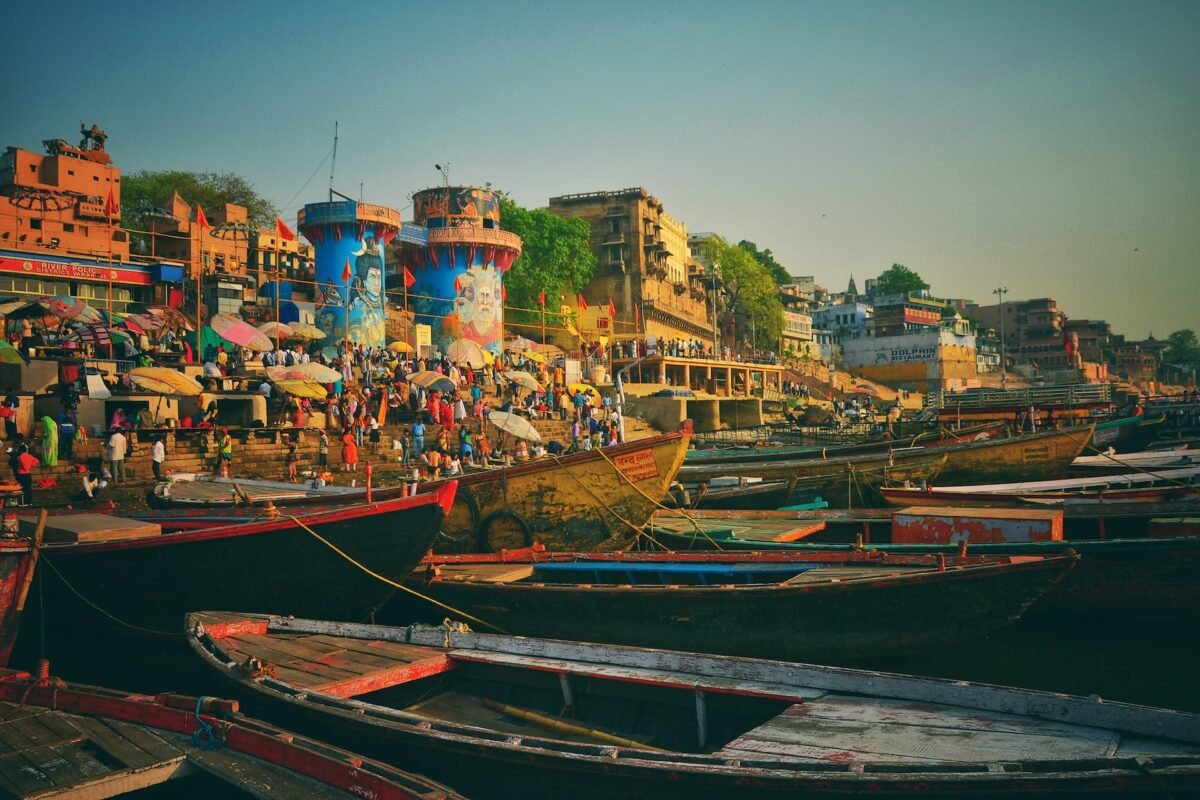
What to do and see in Varanasi?
On your first afternoon and evening, you might explore these attractions:
Visit the Golden Temple: The Kashi Vishwanath Temple is a hugely popular pilgrimage site and is dedicated to Lord Shiva. Situated on the banks of the Ganges, this is a must-see holy site.
Sunset walk along the Ganges: Stroll along the river as the sun sets, and witness the evening routines that occur by the river as you pass the numerous Ghats (riverside steps that lead right down to the river.)
Where to eat in Varanasi?
Bowl of Compassion: A rooftop restaurant with tasty, great-value cuisine. As an extra delightful bonus, the restaurant supports vulnerable kids in need of educational support, thus adding to the feel-good factor!
Blue Lassi Cafe: For a scrumptious Lassi with a twist.
Tadka at Ramada Plaza: For a delicious meal with some great music and ambiance.
Where to stay in Varanasi?
- $$$ – Taj Ganges or Taj Nadesar PalaceVaranasi
- $$ – Hotel Buddha or Hotel City Inn
- $ – Treebo Trip Kamesh Hut
Day 9: Varanasi
Your second day in Varanasi can be spent exploring ancient ruins and relishing in the wonders of the Ganges River.

What to do and see in Varanasi?
Take a sunrise boat ride on the Ganges: If you are an early riser, opt for an early morning boat ride along the Ganges. Here you might spot children chanting along the river and monks enacting fire performances as a blessing to the river. Assi Ghat is the southernmost ghat in the city and is a great place from which to catch a boat.
Bathe in the holy waters: If you’re so inclined, you might also choose to bathe in the river yourself.
Free yoga class at Assi Ghat: Enjoy Assi ghat’s daily yoga class and let your hair down as you revel in the laughing exercise.
Local Bazaars: Try local street food and crafts and explore local popular markets like Vishwanath Gali and Golghar.
Aarti Ceremony: Experience a ‘ceremony of light’ at Dasawamedh Ghat and enjoy beautiful rituals, chanting, and prayer. Hindy monks known as sadhus perform these prayers.
Day 10: Varanasi – Delhi – Home
It’s time for your dazzling 10-day itinerary to come to an end. Head back to Delhi from Varanasi by a plane ride. Spend one last night in the vibrant capital or head back home, remembering all the incredible memories you made along the way.
Final thoughts:

North India is a melting pot of culture, history, food, and style. If you loved this guide to the North and the Golden Triangle, why not explore some of the best beaches in South India? You could seriously spend a lifetime exploring this magical destination. If you’ve traveled to India, what were some of your highlights? Share with us below!






